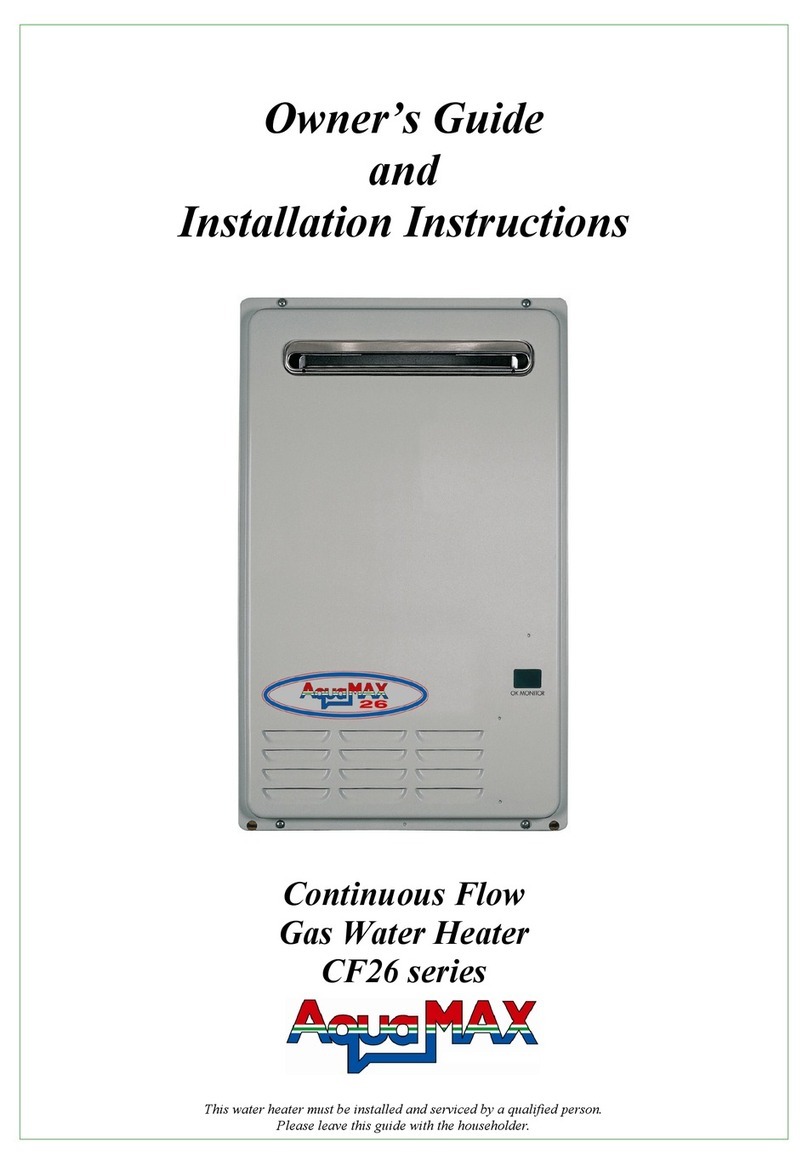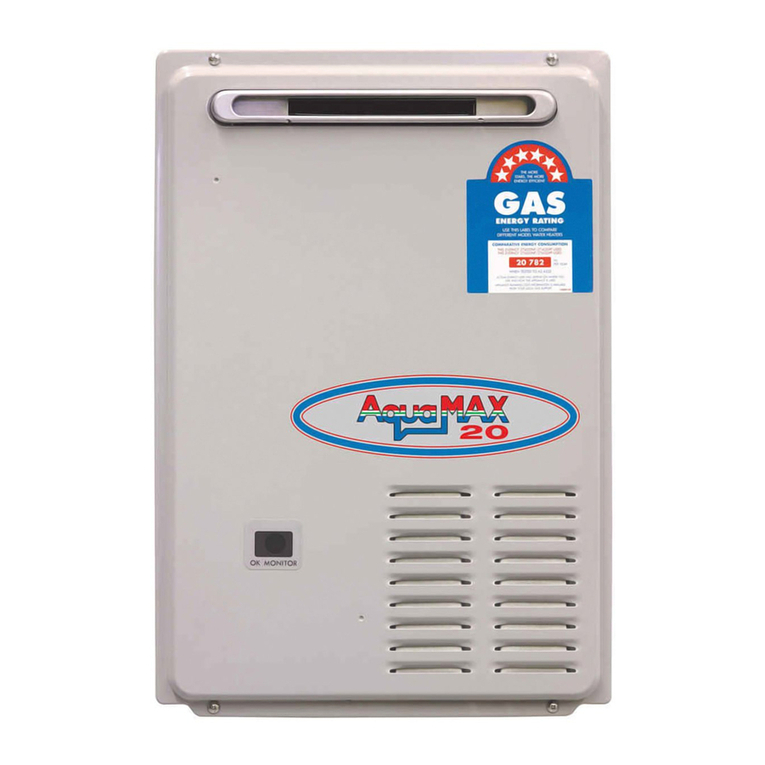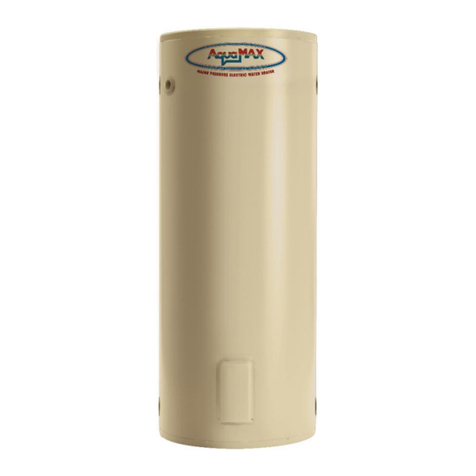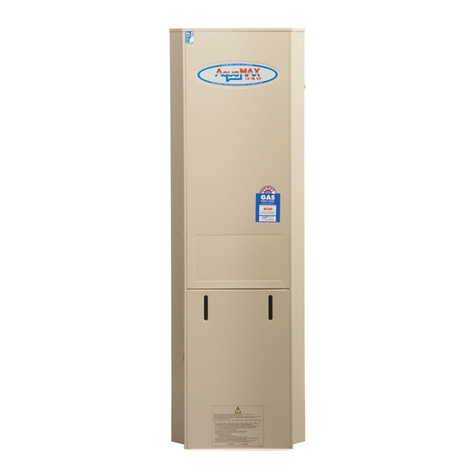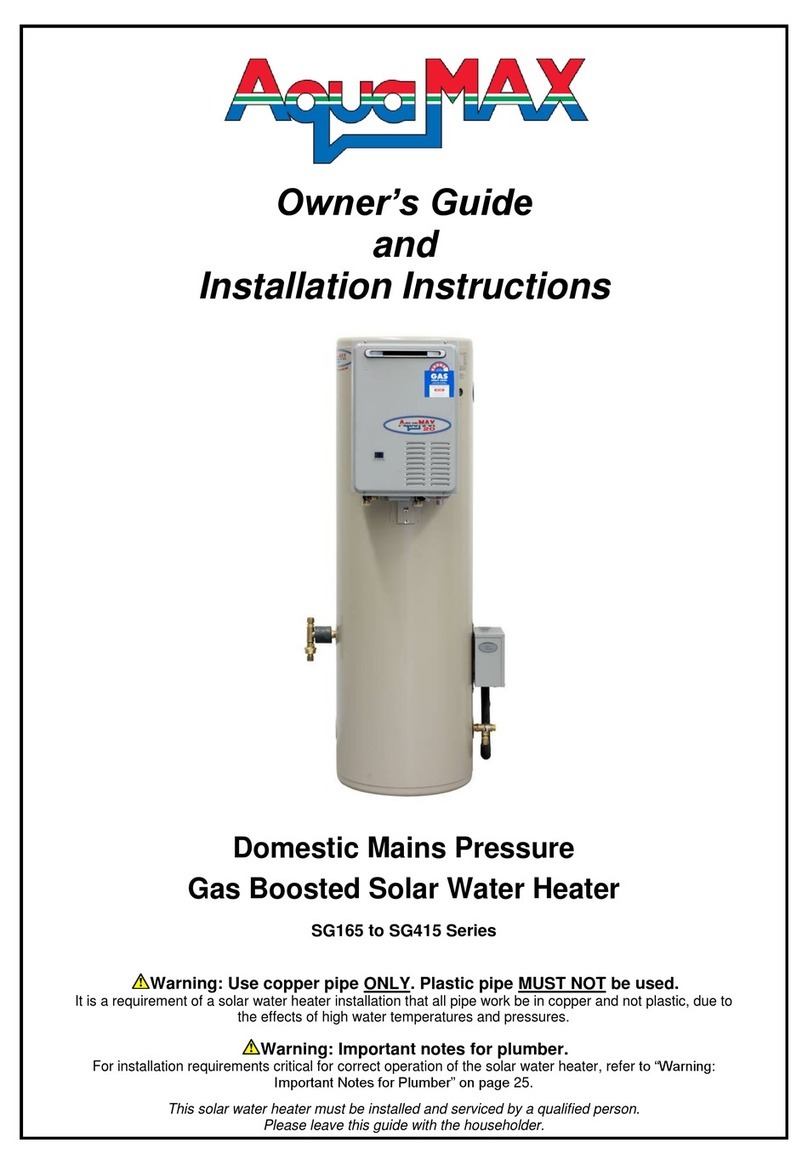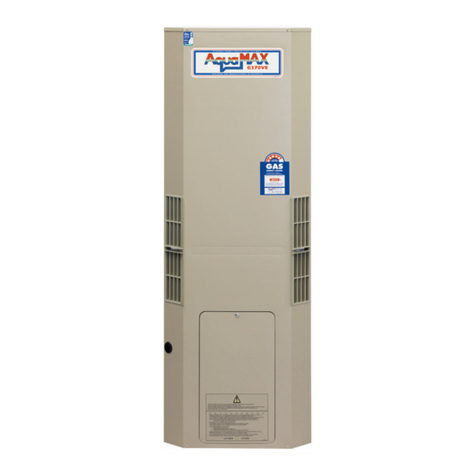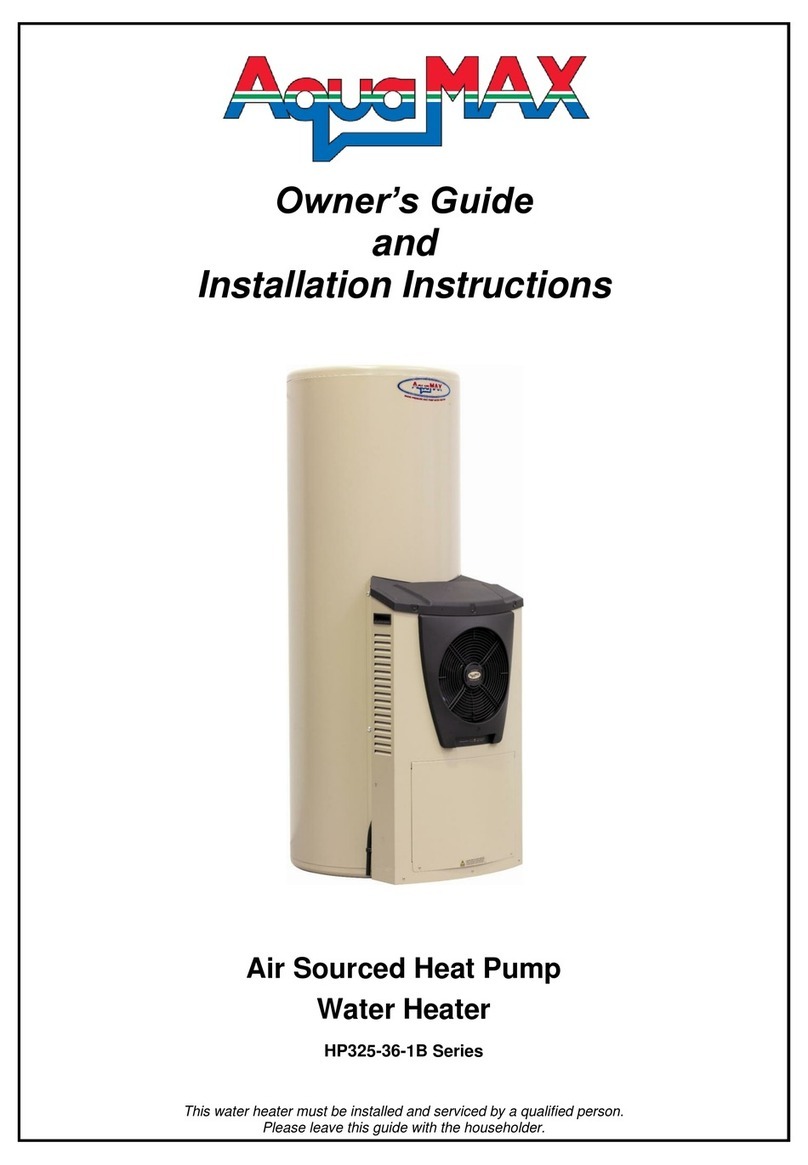
9
prevailing weather conditions; however, the electric booster will provide a quantity of hot water after a period
of 2 ~ 6 hours (boost quantity and time dependent upon solar storage cylinder size).
Pressure Temperature Relief Valve (PTR Valve)
The PTR valve is near the top of the solar storage cylinder and is essential for safe operation. It is possible
for the PTR valve to release a little water through the drain line during each heating period. This occurs as
the water is heated and expands by approximately 1/50 of its volume.
Continuous leakage of water from the PTR valve and its drain line may indicate a problem with the water
heater (refer to ‘Pressure Temperature Relief Valve Running’ on page 13).
Warning: Never block the outlet of the PTR valve or its drain line for any reason.
Operate the easing lever on the PTR valve once every six months. It is very
important you raise and lower the lever gently.
Warning: Exercise care when operating easing leaver as water discharge from the
solar water heater may be of a very high temperature.
Warning: Exercise care to avoid any splashing of water, as water discharged from the drain line will be
hot. Stand clear of the drain line’s point of discharge when operating the valve’s lever.
Danger:Failure to perform this procedure may result in the solar storage cylinder failing, or under certain
circumstances, exploding.
If water does not flow freely from the drain line when the lever is lifted, then the solar water heater must be
checked. Phone Aquamax Service or their nearest Accredited Service Agent to arrange for an inspection.
The pressure temperature relief valve should be replaced at intervals not exceeding 5 years, or more
frequently in areas where there is a high incidence of water deposits (refer to ‘Water Chemistry’ on page 11).
Expansion Control Valve (ECV)
In many areas, including South Australia, Western Australia and scaling water areas, an ECV is fitted to the
cold water supply line to the solar water heater (refer to the ‘Cold Water Supply Plumbing Arrangement’
diagram on page 22). The ECV may discharge a small quantity of water from its drain line during the heating
period instead of the PTR valve on the solar water heater.
Operate the easing lever on the expansion control valve once every six months. It is very important you
raise and lower the lever gently.
The expansion control valve should be checked for performance or replaced at intervals not exceeding
5 years, or more frequently in areas where there is a high incidence of water deposits (refer to ‘Water
Chemistry’ on page 11).
Anode
The anode installed in your solar water heater has been designed to slowly dissipate whilst protecting the
solar storage cylinder. If the solar water heater is not used for two (2) weeks or more, a quantity of hydrogen
gas, which is highly flammable, may accumulate in the solar water heater. To dissipate this gas safely, it is
recommended that a hot tap be turned on for several minutes or until discharge of gas ceases. Use a sink,
basin, or bath outlet, but not a dishwasher, clothes washer or other appliance. During this procedure, there
must be no smoking, open flame, or any electrical appliances operating nearby. If hydrogen is discharged
through the tap, it will probably make an unusual sound similar to air escaping.
The life of the solar storage cylinder may be extended by arranging a qualified person to periodically inspect
the anode and replace if required. If the anode is not replaced during a five year service (refer to ‘Major Five
Year Service’ on page 8) then the maximum time after installation when the anode should be replaced for
this solar water heater is 8 years.
For water supplies which are either softened, desalinated or where the water supply may alternate between
a water tank and a reticulated public supply or another supply, it is recommended the anode be replaced
within 5 years of installation.
Cleaning the Solar Collector Glass
Ensure the solar collector glass is free of dust, salt spray or any other matter which may reduce the
effectiveness of the solar collectors. If the solar collector glass is dirty, the collectors can be hosed down with
fresh water or, if the solar collectors are accessible, wash the collector glass with fresh water and a soft
brush. Do not use cleaning agents. Note: The collector glass should only be hosed down or cleaned when
the solar collectors are cool (early morning is the best time).
Have any trees trimmed which may shade the solar collectors.
